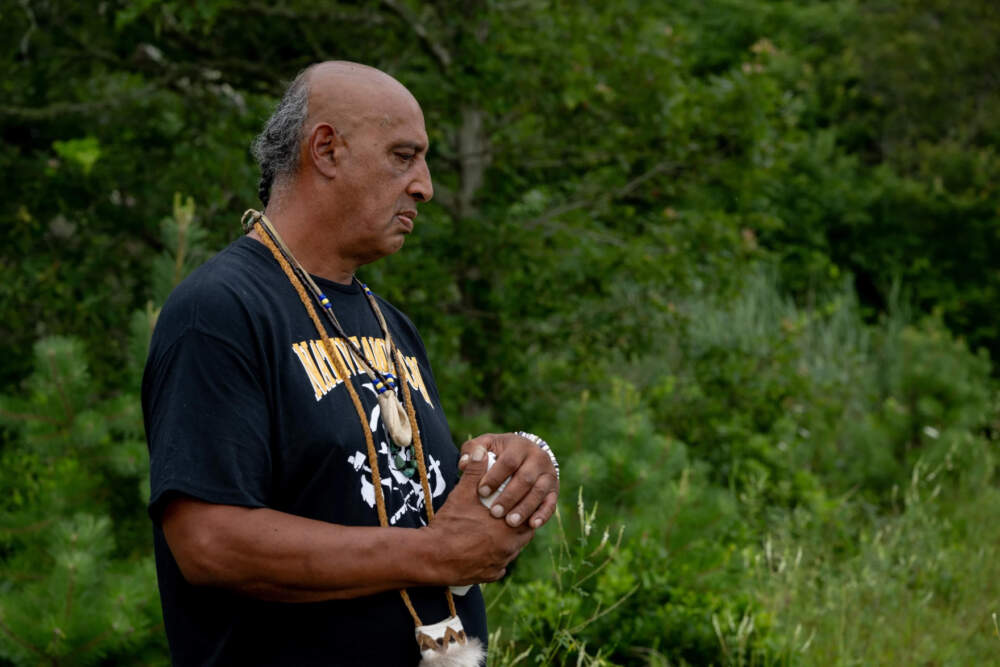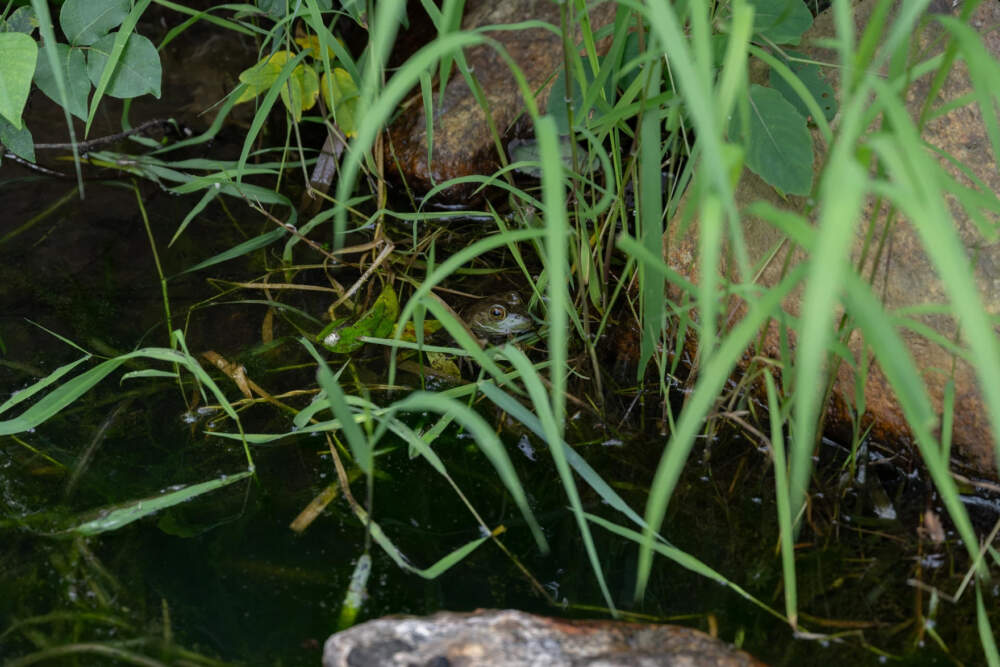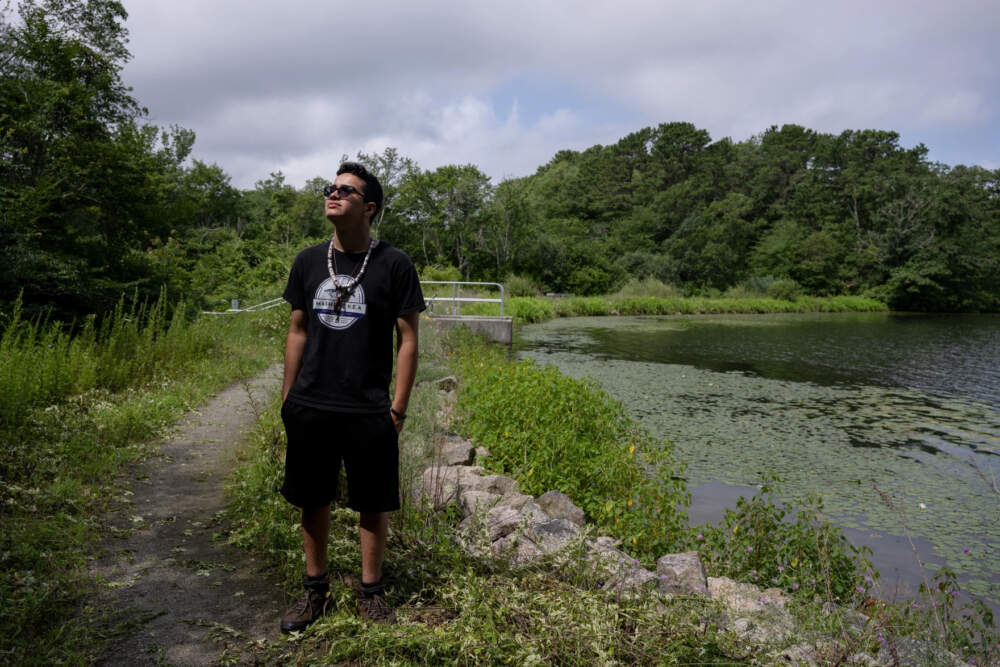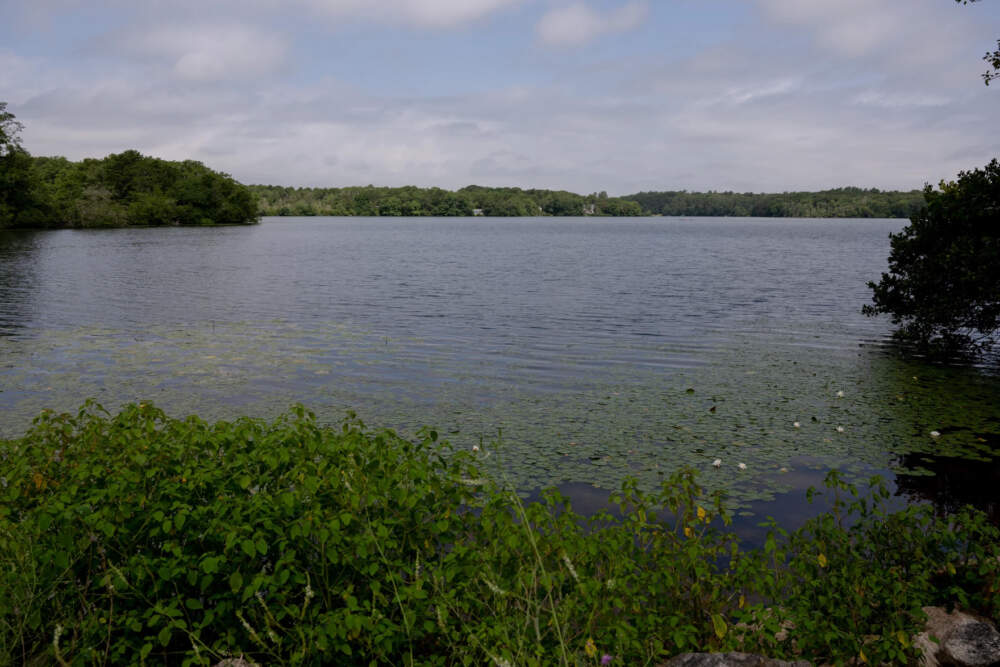Advertisement
In a Massachusetts pond, toxic algae is disrupting tribal heritage

In the stories about the old days, Santuit Pond in Mashpee was a lush green haven, full of croaking bullfrogs and soaring eagles. As a child, Buddy Pocknett, 62, spent almost every day going to the water.
“We would scare up all the little baby fish … and just get handfuls of little sunfish and yellow perch,” he recalled.
The shallow pond — and the surrounding area — were used for thousands of years as a place for members of the Mashpee Wampanoag tribe to play, teach, bathe, hunt and conduct ceremonies.
Pocknett, a tribal elder, can still admire the beauty of the pond, but he can’t ignore what lies just beneath the surface of the water.
“The green slime right there,” he said, “shouldn't be there.”
Cyanobacteria, sometimes known as blue-green algae, can be toxic. Exposure can sicken people and kill animals. Colder winters used to help ponds freeze over, killing off most of the cyanobacteria. But those deep freezes aren’t so common anymore.
This summer, Santuit Pond has been unswimmable for five weeks, according to town officials. But the problem has persisted for decades. Pocknett said, to him, the pond is dead.
“You know, for 20-something years, I can't eat fish [from here],” he said. “That's my favorite thing to do, is catch fish.”

What’s happening at Santuit Pond is an example of a much larger problem. All over, more intense storms, rising sea levels, toxic algae blooms and other environmental crises are making it harder for tribes to practice their culture and to pass it on. And climate change is disproportionately impacting Indigenous people.
"It's taken 400 years to get to this level. Something needs to be done."
Buddy Pocknett, Mashpee Wampanoag Tribe Elder
“It’s not a good thing for our deep tradition of intergenerational sharing of culture,” said Nikki Cooley, who co-manages the Tribes and Climate Change Program at the Institute for Tribal Environmental Professionals at Northern Arizona University.
The organization has helped many of the country’s 574 federally recognized tribes deal with the consequences of a warming planet.
The work often takes place on reservations, land areas that are just tiny fractions of where Indigenous people used to call home.

"Especially in the northeast, Indigenous people don't have access to their traditional homelands,” Cooley said. “And they're trying to maintain that connection through their culture.”
Massachusetts and the town of Mashpee now share control of Santuit Pond. It’s 6 miles — and a few golf courses — away from reservation land that belongs to the Mashpee Wampanoag tribe. But it’s become an important place for Isaiah Peters, a 16-year-old member of the Mashpee Wampanoag tribe.
“When I was younger, I was really disconnected. And I never left the house,” he said. “And then I went outside, started learning about my culture, started using the medicinal [plants], like sassafras and everything. And then I'm starting to realize, like, we need this.”
The teen said he had a climate change awakening a few years ago. If the region’s natural resources are depleted, he thought, a non-native person can leave the region, but he and others in his tribe will forever be connected to the land, and its loss.
“What is the native person going to do? They can't leave. I mean, they can. But … your ancestors are here, your blood is here, your family's here. Everything is here,” he said. “You're going to take double the toll compared to a non-native person. You know what I mean?”

Now, Peters is leading a group of Wampanoag teenagers that’s trying to restore the area. They want to make Santuit — and other ponds — healthy again.
“When it's healthy, it's everything you need,” he said. “But right now we can't take from it. We need to give to it — more giving than taking.”
He and his friends still have hope the pond can be revived.
This story is a production of the New England News Collaborative. It was originally published by CAI.